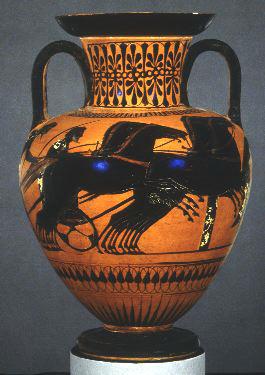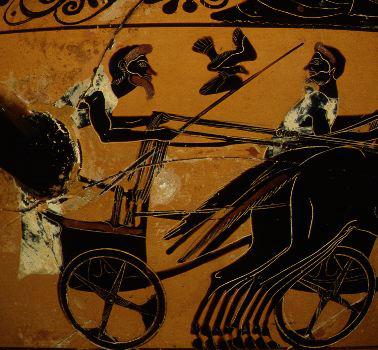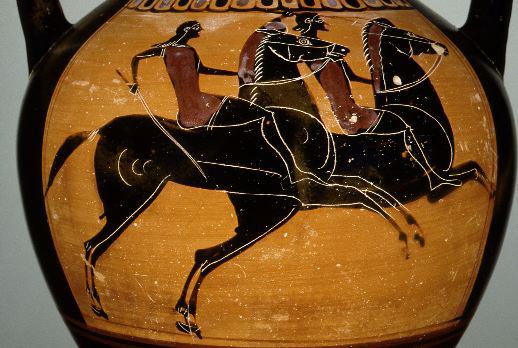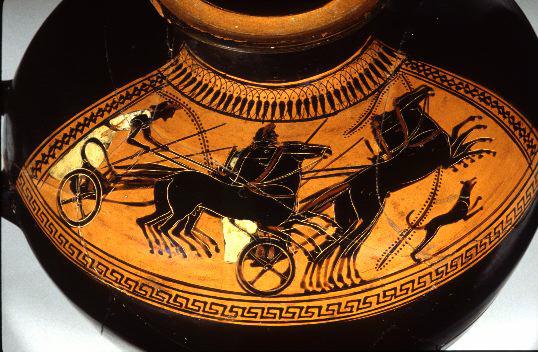Equatrian Events
 Harvard 1933.54
Harvard 1933.54
Side B: scene at center
Photograph by Maria Daniels, courtesy of Harvard University Art Museums
Chariot Racing | Riding
Chariot racing

Tampa 86.34
Side A: charioteer and chariot box at left
Photograph by Maria Daniels, courtesy of the Tampa Museum of Art

Tampa 86.24
Side B: two riders
Photograph by Maria Daniels, courtesy of the Tampa Museum of Art
There were both 2-horse chariot and 4-horse chariot races, with separate races for chariots
drawn by foals. Another race was between carts drawn by a team of 2 mules.
The course was 12 laps around the stadium track (9 miles).
Riding

Tampa 86.35
Shoulder: chariot race
Photograph by Maria Daniels, courtesy of the Tampa Museum of Art
The course was 6 laps around the track (4.5 miles), and there were separate races for
full-grown horses and foals. Jockeys rode without stirrups.
Only wealthy people could
afford to pay for the training, equipment, and feed of both the driver (or jockey) and
the horses. As a result, the owner received the olive wreath of victory instead of the
driver or jockey.




